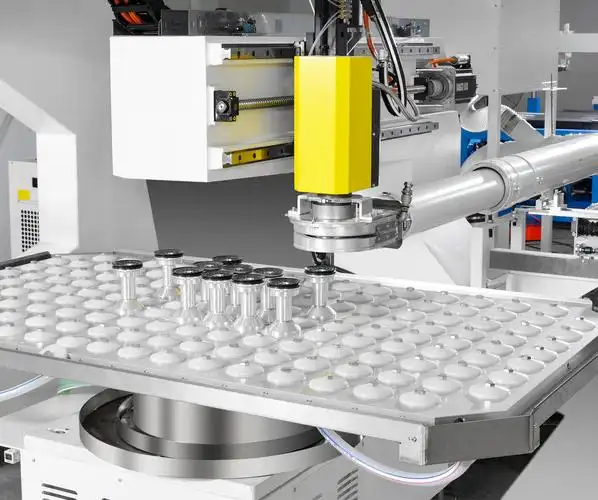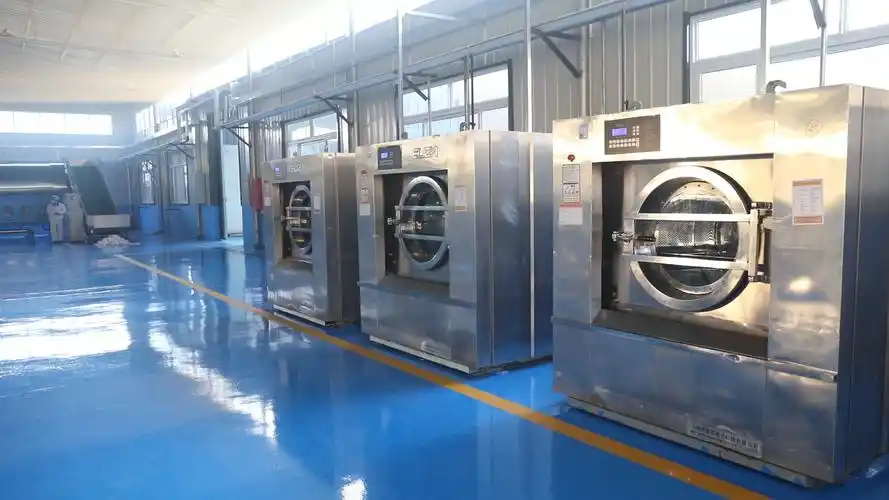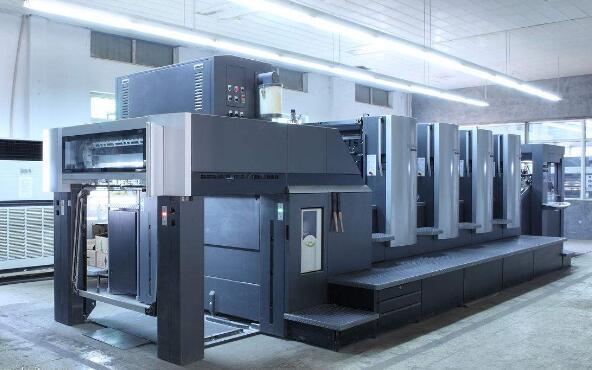
Laser cutting industry
Providing solutions for industrial equipment power
Laser cutting industry
Summary
The application of dedicated motors in the laser cutting industry permeates core aspects of the equipment, including motion control, beam adjustment, and auxiliary systems. Their performance directly impacts cutting precision, speed, and stability. Laser cutting equipment (such as fiber laser cutting machines and CO₂ laser cutting machines) requires motors with high-precision positioning, high dynamic response, and strong anti-interference capabilities etc. The following explains this in detail from specific application scenarios, motor types, and technical characteristics:
I. Cutting Head Drive Motor
Function : Drives the three-dimensional movement (X/Y/Z axes) of the machine tool's cutting head, achieving precise positioning and trajectory control of the laser beam on the workpiece surface.
1. Servo motor (including linear motor)
- Application Scenarios : Cutting head feed drive for high-end laser cutting machines (especially suitable for high-speed cutting and precision contour processing).
- Technical Characteristics :
- Direct Drive Linear Motor :
- Without mechanical transmission chains (such as ball screws and gears), it directly converts electromagnetic force into linear motion. Positioning accuracy can reach ±0.001mm, and the speed can reach up to 120m/min (traditional ball screw transmission is approximately 60m/min).
- High acceleration (2~5g), suitable for frequent start-stop complex path cutting (such as openwork patterns, gear racks, etc.).
- Case Study : A large-format fiber laser cutting machine uses a linear motor to drive the X/Y axes. When cutting thin stainless steel plates, the speed can reach 80m/min, and the surface roughness Ra < 3.2μm.
- Rotary Servo Motor + Ball Screw :
- Lower cost than linear motors, suitable for small and medium-sized equipment or thick plate cutting (such as 20mm carbon steel cutting), positioning accuracy ±0.01mm, speed 30~60m/min.
- Equipped with a high-precision reducer (such as a harmonic reducer) to reduce transmission backlash and improve low-speed stability.
- Direct Drive Linear Motor :
- Control Points :
- Needs to be synchronized with the laser generator trigger to ensure precise matching of movement and laser energy output (such as automatically reducing speed and adjusting power at corners).
2. Torque Motor (Direct Drive)
- Application Scenarios : Drives the rotating axis (C-axis) or swing axis (B-axis) of the cutting head, used for pipe, profile, or 3D curved surface cutting.
- Technical Characteristics :
- High Torque, Low Speed Operation : Direct drive of the rotating worktable without a reducer, torque can reach hundreds of N·m, speed 0.1~100r/min, positioning accuracy ±5 arc seconds.
- High Rigidity and Resistance to Load Fluctuations : Suitable for clamping and rotating heavy workpieces (such as 1-meter diameter steel pipes) for cutting, avoiding errors caused by deformation of the transmission chain.
- Case Study : The C-axis torque motor of a five-axis laser cutting machine drives the rotation of the pipe material, cooperating with the X/Y/Z axes to achieve one-time forming cutting of the intersection line of the pipe fitting.
II. Beam Adjustment System Motor
Function : Controls the focal position, spot mode, and reflector angle of the laser beam to ensure cutting quality.
1. Voice Coil Motor (Linear Type)
- Application Scenarios : Drives the up and down movement of the focusing lens in the dynamic focusing system (DFC), adjusting the focal length in real-time to adapt to workpieces of different thicknesses.
- Technical Characteristics :
- Ultra-high-speed Response : Stroke 10~50mm, response time <10ms, acceleration can reach 10g, meeting the real-time zoom requirements of high-speed cutting (such as sudden changes in plate thickness during cutting).
- Non-contact Transmission : No mechanical wear, positioning accuracy ±0.001mm, suitable for high-frequency fine-tuning (such as focal length adjustment more than 100 times per second).
- Case Study : The dynamic focusing system of the fiber laser cutting machine uses a voice coil motor, automatically switching the focal length when cutting 5~20mm carbon steel, increasing the cutting speed by 30%.
2. Stepper Motor (Miniature)
- Application Scenarios : Drives auxiliary mechanisms such as reflector angle adjustment and optical shutter switches.
- Technical Characteristics :
- Microstepping Control : Achieves 0.001° level angle adjustment through the driver's subdivision, ensuring laser beam collimation (such as reflector angle calibration during multi-axis optical path switching).
- Maintain Torque Characteristics : The position can be locked after power failure to prevent optical path offset from affecting cutting accuracy.
III. Auxiliary System Motor
1. Feeding/Unwinding Motor
- Application Scenarios : Drives the automatic feeding mechanism for coils and the waste material unwinding device (such as continuous feeding for automotive sheet metal laser cutting machines).
- Motor Type :
- Servo Motor : Cooperates with the tension control system to ensure uniform feeding speed (error < ±0.5mm/m) and avoid material stretching and deformation.
- Variable Frequency Motor : Used in high-power unwinding scenarios (such as unwinding waste material after thick plate cutting), adjusting the torque through the frequency converter to adapt to different loads.
2. Cooling System Motor
- Application Scenarios : Water cooling or air cooling system for laser generators and motor drive modules (such as cold water pumps and cooling fan drives).
- Technical Characteristics :
- Liquid Corrosion Resistance : The water pump motor uses a stainless steel impeller and sealing structure to prevent cooling medium leakage from damaging the motor.
- Variable Frequency Drive Automatically adjusts cooling flow based on equipment temperature, saving energy and preventing condensation issues caused by excessive cooling.
3. Dust Removal / Exhaust Motor
- Application Scenarios Suction treatment of dust and metal vapor generated during cutting.
- Motor Type :
- High-Pressure Centrifugal Fan Dedicated Motor Power 5~20kW, speed 2900r/min, air pressure up to 5000Pa, ensuring timely removal of exhaust gases generated during cutting (such as odor gases when cutting acrylic).
IV. Technical Challenges and Trends of Laser Cutting Motors
1. Dynamic Precision Control under High-Speed Cutting
- Challenges When the cutting speed exceeds 100m/min, the response lag of traditional servo motors may cause contour distortion (such as excessive ellipticity of small holes).
- Solutions :
- Using Direct Drive Motor + Nano-Level Grating Feedback to achieve closed-loop control (position loop sampling period <1ms).
- Introducing Predictive Control Algorithm to compensate for the lag error during motor acceleration and deceleration (such as feedforward control based on CAD path).
2. Anti-Laser Interference and Electromagnetic Compatibility
- Challenges Strong electromagnetic pulses generated during laser cutting may interfere with motor control signals, causing loss of control or position jumps.
- Solutions :
- Motor cables use Double Shielding + Independent Grounding and the drive module adds a filter circuit.
- Selecting Hysteresis Synchronous Motor or ** Brushless DC Motor (BLDC) ** to replace traditional brushed motors, reducing electrical spark interference.
3. Lightweight and Compact Design
- Trends The increasing demand for portable laser cutting machines (such as handheld fiber cutting machines) is driving the development of smaller, higher power density motors.
- Case Study Handheld laser cutting head integrates Miniature servo motor + harmonic reducer Weight <3kg, supports one-handed operation and achieves ±0.2mm cutting accuracy.
4. Intelligent Maintenance and Energy Efficiency Improvement
- Trends :
- Motor built-in Temperature / Vibration Sensors Real-time fault warning through the Internet of Things platform (such as bearing wear, winding overheating).
- Energy recovery technology popularization: converting motor kinetic energy into electrical energy and feeding it back to the grid during braking, energy saving rate can reach 15%~20% (such as the linear motor system of high-power laser cutting machines).
Summary
Dedicated motors are the core components for laser cutting equipment to achieve "high-speed, precise, and stable" processing. From the direct drive motor of the cutting head to the voice coil motor for beam adjustment, its technological evolution directly drives the industry towards High power (ten-kilowatt-level cutting), high precision (micrometer-level), and intelligence development. In the future, with the deep integration of direct drive technology, servo control algorithms, and laser light sources, motors will play a more critical role in cutting-edge fields such as 3D cutting and ultra-fast laser micro-processing, supporting high-end manufacturing needs in new energy vehicles, aerospace, and semiconductors.








